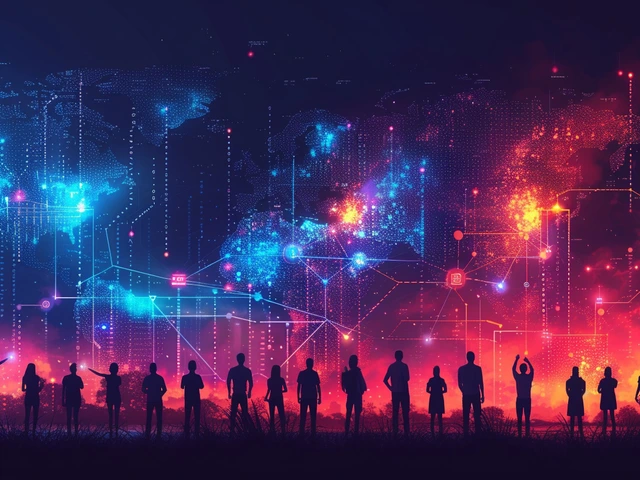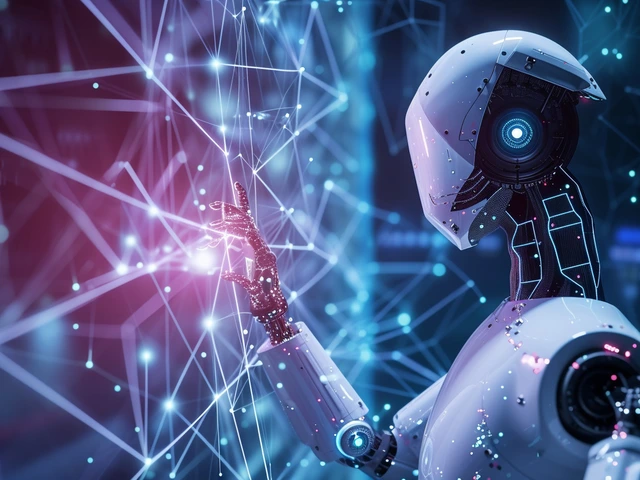Aug
7

- by Lillian Stanton
- 0 Comments
Unlocking the Power of Python
"It's just a snake!" That's what my husband, Douglas, exclaimed the first time I mentioned Python in our conversation. I burst into laughter, enlightened him that I was referring to the world's fastest-growing, most versatile programming language used in artificial intelligence (AI), not the constricting jungle beast.
Python, contrary to Douglas's initial thoughts, isn't a slithering reptile, but an astounding tool that has a profound impact on the world of technology. Offering high-level data structures, dynamic typing, rapid application development, and adjustable syntax, Python makes coding simpler and much more fun! A fun fact? Python was named after the British comedy series 'Monty Python,' which the creator Guido van Rossum was a fan of, not after the snake.
Why Python for AI and Machine Learning?
Now, why would anyone choose Python for AI and Machine Learning, you might wonder? The answer lies in its simplicity and versatility. Python is an interpreted language, which means it goes straight from the source code to the runner without an intermediate compile step. This makes it a hit amongst programmers who aim to focus on algorithmic work rather than getting entangled in technical intrusions.
Moreover, Python has a rich library ecosystem that includes NumPy for numerical computation, pandas for data manipulation, matplotlib for creating graphs, and several others, such as Tensorflow, Theano, and Keras for deep learning tasks. This ensures you don't have to break your head reinventing the wheel. You'd be surprised to know that even Instagram, the world's biggest photo-sharing app, is built using Python. Intriguing, huh?
Getting Started with Python
Did I mention that Python is particularly easy to learn? It's a tremendous beginner-friendly language. Though I can't go into detail here about Python's fundamental concepts, I can certainly urge you to master the basics. Allocate some time each day to learning about topics like variables, data types, operators, control flow, functions, and file handling, to name a few.
Remember, the key to learning any programming language is "practice." My experience with Python started just as Douglas proposed a weekend trip to a beach, and I curiously chose to study Python over the sun, sand, and waves. The decisive moment was when I successfully wrote a python script to automate a mundane daily task. While the beach would've given me a tan, Python gave me crucial skills and a sense of achievement.
Python and AI: A Dynamic Duo
After you've got your head around Python's basic concepts, it's time to delve into more advanced territories. While AI can seem daunting at first, Python makes it appear more manageable. You'll want to equip yourself with a blend of mathematical knowledge, computing proficiency, and understanding of machine learning algorithms.
One amusing incident took place when Douglas and I were playing chess, and he jokingly made a checkmate move. I told him that within a fortnight, I'm going to build a Python-based AI model that will outshine him in Chess. And Voila! With Python's chess library and machine learning concepts, I was able to design a modest chess engine that can predict fairly decent moves. Douglas was stunned and amused to see AI outwitting him.
Diving into Machine Learning with Python
Machine Learning (ML) - an application of AI, represents a system's capability to learn and enhance from experience. Python's rich libraries like Scikit-learn, TensorFlow, and Keras make the implementation of ML algorithms easier than ever before.
Start with a simple ML project, such as predicting house prices or classifying emails as spam or not. Trust me; there's something exhilarating about training an algorithm to learn on its own. It's akin to finding a message in a bottle, but instead, you're instructing a machine to find that bottle kept amidst several others.
Exploring Deep Learning and Neural Networks
Imagine trying to teach a machine how to identify a cat's picture. Sounds exciting, right? It will involve delving into the realm of neural networks and deep learning, where you'll teach machines to reason like human brains. It's like an exhilarating rollercoaster ride, filled with a lot of 'Aha!' moments.
The key to mastering this complex yet exciting domain lies in comprehending the underlying mathematics and implementing it using Python. And I'm not kidding when I tell you these neural networks can be impressively smart; they are behind self-driving cars, voice assistants, and real-time object recognition. It's the beauty of Python and AI.
Don't Forget to Stay Updated and Practice
In the fast-paced world of technology, things change at an unprecedented rate. Today's cutting-edge technology can quickly become outdated tomorrow. Thus, it's crucial to keeping yourself updated, whether by reading books, undertaking online courses, or joining Python and AI communities.
In terms of practice, don't be afraid of starting small. Experiment with mini-projects. The best part about Python is its huge community, which is always ready to lend a helping hand. Remember, every expert was once a beginner. With patience, persistence, and a touch of humor, you'll master Python for AI in no time. Just like I did. And who knows, you might even end up teaching a "snake" a trick or two, just like I did to Douglas.






Write a comment